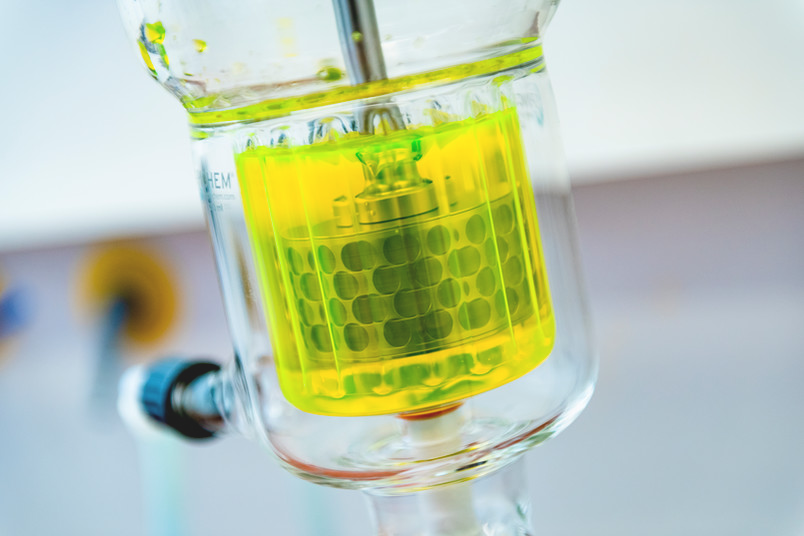Sep 11 2020
The chemical industry expects to be successful in transitioning from oil to renewable raw materials by using enzymes and microorganisms.
 The enzyme reactor at close range: The enzymes do their work in the liquid. Image Credit: © Damian Gorczany.
The enzyme reactor at close range: The enzymes do their work in the liquid. Image Credit: © Damian Gorczany.
The underlying concept is that bacteria have the ability to not just transform waste products into useful chemicals but also derive energy from them. In the end, they too can be reused for later processes.
This goal is what motivates Professor Dirk Tischler, who leads the Microbial Biotechnology research group at Ruhr-Universität Bochum (RUB). At present, Tischler’s group is designing a process for synthesizing ferulic acid, a platform chemical, from wood waste. This study was reported in Rubin, RUB’s science magazine.
Enzymes Convert Substances
The goal of what is called white biotechnology is to transform the production processes of numerous substances from crude oil, which is still in regular use, to renewable raw materials. The team would choose to use waste materials, for instance, wood waste obtained from the paper or furniture sector.
Wood residues that can’t be used in paper production contain cellulose, whose sugar components are certainly suitable as an energy source for bacteria. In addition, wood residues also contain elements that can be used as starting material for substances that are interesting for industrial production.
Dirk Tischler, Professor and Head, Microbial Biotechnology Research Group, Ruhr-Universität Bochum
One such example is vanillyl alcohol, from which the aroma vanillin can be extracted.
At present, Tischler’s research group is working to devise a process where lignin, a constituent of wood, is converted into ferulic acid, a platform chemical from which additional substances can be synthesized.
Particular enzymes handle the transformation from one initial substance to another, specifically one that is needed and highly useful. The initial step has been realized already: apart from a derivative product, some ferulic acid is also synthesized. But the entire process is not so efficient yet; the team hopes it can improve it via genetic modification.
Using Whole Cells and Recycling Them as Biomass
In contrast to the lab where the purified enzymes are utilized, the industry uses whole cells into which the blueprint for the respective enzymes is added. As soon as the bacteria are completely used after a production cycle, they can be reused as biomass.
This is our ultimate objective: moving away from the linear production processes of the past towards the reuse of all components.
Dirk Tischler, Professor and Head, Microbial Biotechnology Research Group, Ruhr-Universität Bochum